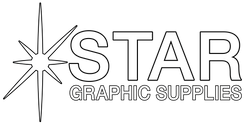Offset Press Plates
Polyester Offset Printing Plates – Simple, Affordable, and Reliable
Star Graphic Supplies specializes in high-quality polyester offset plates designed for fast, clean imaging and consistent print performance. Perfect for small to mid-size shops, these plates provide sharp reproduction, stable ink-water balance, and excellent durability for short to medium press runs.
Explore popular options such as Genie 5000 Polyester Laser Plates and GenieJet Polyester Plates—trusted by printers nationwide for dependable results and simplified workflows.
-

Genie 5000 Polyester Laser Plates
DAA International / GenieJet
$79.00Genie 5000 Polyester Laser Plates (100 plates/box) Genie 5000 Polyester Laser Plates are double-sided, 5 mil, designed to work best with HP 5000/5100 laser printers. 10,000 Impression Plate Note - The HP 5100 printer is discontinued. HP...- Weight:
- 8 LBS
$79.00 -

GenieJet Polyester Plates (8 mil)
DAA International / GenieJet
$229.00GenieJet Polyester Plates (100/pack) 8 mil plate thickness ONLY. No other plate thicknesses are manufactured. Note - We will provide test plates. Send us your plate imaging ready artwork and we'll send you back a finished plate for...- Weight:
- 8 LBS
$229.00
